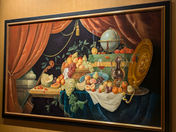2 Million Views & Counting – Follow the Adventures of
The Carpe Diem Kids
Award-Winning Global Travel Blog by Cookie & Keller
Inspiring Curated Adventures in Culture, Cruising, Theatre, and Nature
Welcome to Where Is Cookie?, a globally followed travel and arts blog sharing inspiring journeys across 120+ countries. Follow award-winning writer Christene "Cookie" Meyers and photographer Bruce Keller as they cruise the world, explore hidden gems, attend cultural performances, and review top hotels and destinations. Whether you're a travel lover seeking expert advice or a tourism board looking for curated media exposure, you'll find travel tips, hotel reviews, theater guides, nature escapes, and more — all captured with authenticity, wit, and heart.
About Our Blog
Where Is Cookie? is a travel and lifestyle publication with 2+ million views, blending decades of journalism, photography, and global exploration. We share timely, trend-focused content that enriches and educates, making travel more accessible, fun, and meaningful. We’ve been featured in SD Voyager, Big Sky Journal, and more.
Heads Up! We’re currently updating our website, so some older content might be temporarily unavailable.
Thanks for your patience and support!
- Cookie & Keller
































